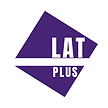2025 LAT Plus - Deconstructing Exam Questions Practice
- latplus2022
- Mar 11
- 3 min read
Deconstructing the exam question is the first step in taking any exam, including the Law Admission Test. You need to be able to deconstruct an exam question in order to be able to fully answer it.
That's why at LAT Plus, we show and teach students how to deconstruct exam questions skilfully and efficiently. This enables our students to enter, take and exit the exam with confidence.
What are the key parts of exam questions?
The key parts of the question are:
Task or instruction words. Examples are assess, analyse, evaluate.
Topic words. This is the main topic or focus of the question.
Limit or boundary words. These define the scope of the question and the scope of your response.
LAT Plus School Flyer Practice Exam Questions
Did you receive a LAT Plus School Flyer from LAT Plus? You would have been given some practice exam question examples. We hope you had a go at deconstructing the exam questions yourselves! After having a go, compare your answers to the below.
Key:
Task/instruction words
Topic words
Limit/boundary words
Q1: Develop an analytical piece of writing, with a title, that discusses and evaluates the strengths and weaknesses of the arguments presented in the following opinion piece.
Q2: Analyse the role of Australia’s federal structure in the protection of the global environment.
Q3: Assess the role of dispute resolution mechanisms in achieving justice in the workplace.
Q4: Explain the economic factors that have contributed to the Australian Government’s current fiscal policy stance.
When approaching an essay or analytical question, understanding task words, topic words, and limit/boundary words is essential for structuring a precise and well-focused response.
Task Words indicate what you need to do in your response. Each task word has its own definition, requiring different levels of analysis, evaluation, or explanation. For example to analyse is to break down into components and examine their relationships whereas assess is to make a judgment based on evidence.
Topic Words are drawn directly from the stimulus or question and define the specific subject matter you need to address in your response. They help determine what your answer should focus on, ensuring that your discussion remains relevant and aligned with the given prompt. Unlike simple recall-based questions, topic words typically require critical thinking and analysis rather than just restating facts. This means you are expected to engage with the material by examining different perspectives, making connections, and forming reasoned arguments rather than simply listing information. A key aspect of topic words is that you do not need prior knowledge of the subject matter to respond effectively. Instead, the task requires you to analyse the information provided in the stimulus and think critically about how to interpret and respond to it. This means identifying patterns, implications, arguments, and evidence rather than relying on memorised facts. By focusing on the key topic words and applying logical reasoning, interpretation, and evaluation, you can construct a strong response without needing extensive background knowledge.
Limit/Boundary words help narrow the focus of your response to ensure relevance and precision. These constraints may take different forms, for example there are timeframe boundaries that could distinguish between current and historical issues (e.g., “current fiscal policy” requires discussion of contemporary policies rather than past ones). Scope boundaries define the level of specificity required (e.g., “dispute resolution in the workplace” focuses on employment conflicts, not legal disputes in general). Geographical boundaries clarify the area of focus (e.g., “Australia’s federal structure in protecting the global environment” requires analysing Australia’s role in international environmental efforts, not just domestic policies). These are just a few examples of how boundaries shape the scope of a response. By identifying and breaking down these components, you can effectively analyse the question, construct a well-structured argument, and provide a critical response without needing any prior knowledge of the subject.
Join one of our Accelerator Programs today to learn the art and science of deconstructing exam questions. Our LAT Plus program instructors will take you through multiple practice questions and explain the reasoning behind why words are labelled as instruction, topic and limiting words.
.png)



Comments